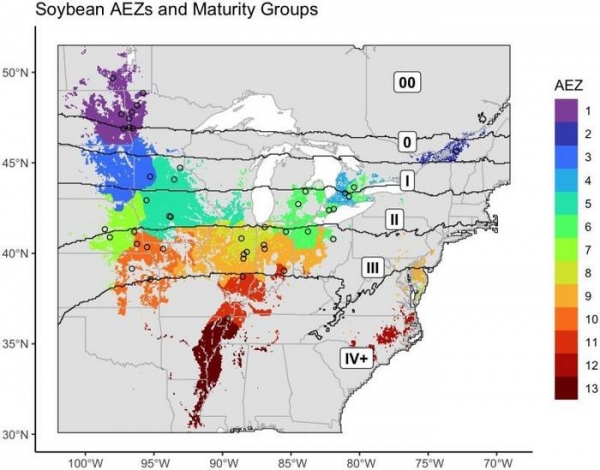In the quest to optimize crop productivity across environments, soybean breeders test new cultivars in multiple locations each year.
In the quest to optimize crop productivity across environments, soybean breeders test new cultivars in multiple locations each year. The best-performing cultivars across these locations are selected for further breeding and eventual commercialization. However, a new study from the University of Illinois Urbana-Champaign suggests current soybean testing locations may not be delivering breeders the biggest bang for their buck.
“We met with most of the soybean breeders in public research universities across the Midwest and asked where they set up their trials over the last 30 to 40 years,” said Nicolas Martin, an associate professor in the Department of Crop Sciences, part of the College of Agricultural, Consumer and Environmental Sciences (ACES) at Illinois. “We found that they tend to select these sites a little bit by tradition.”
Convenience is a strong draw, as well.
“Certain types of sites are overrepresented because of tradition rather than their environmental utility; for example, sites near large research universities like Urbana, Illinois; Ames, Iowa; or Lafayette, Indiana. It’s not that we need a lot of data from those environments, but those test sites are convenient to access where cultivars are being developed,” said doctoral student Catherine Gilbert, the study’s first author.
Read more at: University of Illinois - Urbana-Champaign
Maps from the University of Illinois Urbana-Champaign study suggest optimal testing sites based on agroecological zones (AEZs) and soybean maturity groups (00 to IV+). (Photo Credit: University of Illinois Urbana-Champaign)




